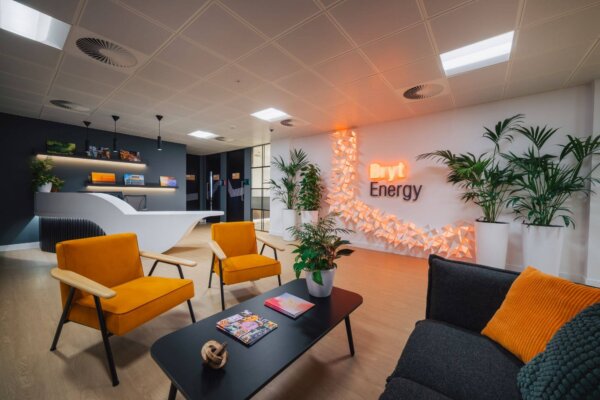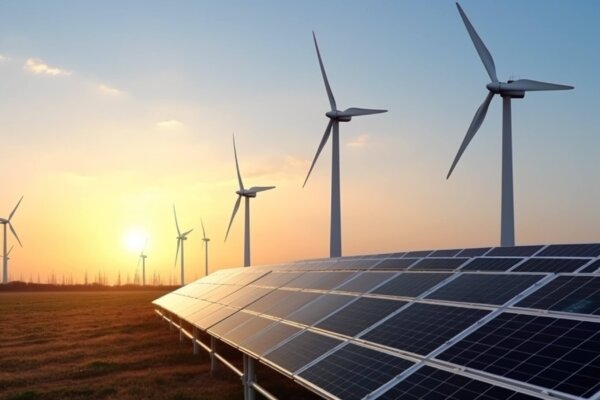With more choices than ever, car owners are increasingly choosing the sustainable option and going Electric. However, despite their critical role in reducing emissions and reaching net zero, electric vehicles (EV) numbers are still relatively low compared to those fuelled with petrol or diesel1.
We know that during the height of the current pandemic, human activity slowed to reduce the spread of coronavirus, emissions dropped, and nature bounced back2. Inevitably these effects are likely to be temporary when the world returns to the new normal, and EV’s may offer a realistic way to rebuild whilst reducing travel emissions more permanently.
As we, thankfully, see a return to normality we can begin to review current behaviours and look to the future. Could a boost to EV’s be part of the sustainable road to recovery following COVID-19?
To find out more, we caught up with our colleagues at Grønn Kontakt (also part of the Statkraft family) to see what an EV future might look like. Anthony Hinde is Managing Director at Grønn Kontakt.
So Anthony, what led you to choose an EV? And what do you think an EV future would look like?
“EV’s are a key part of a more sustainable and healthier future. The WHO estimates that pollution is responsible for an estimated 4.2 million deaths globally per year3, with up to 36,000 of these within the UK alone4, and vehicle emissions are a significant part of this. In fact, the UK transport sector is responsible for 28% of UK CO2 emissions5. Provided EV’s are charged using a renewable electricity supply, they can dramatically reduce pollution, particularly for urban areas.
For me, this is just so incredibly important. You may be familiar with the case of 9-year-old Ella Kissi-Debrah in 2013? She died, potentially as a result of unlawful levels of air pollution along her walk to school6. And this isn’t an isolated incident – Unicef’s Toxic School Run report really highlights the particular risks posed to children, with an estimated 11,000 new daily child-asthma cases worldwide7. If we can prevent this, surely, we must?
It’s also important to remember that emissions pose threats beyond the immediate impact on human health; the links between emissions, increasing global temperatures and climate change are well known. Climate change may already be responsible for 150,000 deaths a year alongside increasing biodiversity loss8. With ethical sourcing and a Circular Economy approach, EV’s can reduce pollution across the whole supply chain. And, with reduced fossil fuel use, chances of damaging leaks or spills are also lessened9.
One other benefit that has been particularly highlighted recently is the potential reduction in noise pollution, as EV’s are quieter than petrol and diesel cars. With the recent reduction in traffic due to COVID-19, the world has been quieter – I’ve heard more birdsong in the last few months than in several years! With more EV’s, less traffic noise from vehicles could become the norm.”
As an EV owner, what can you tell us about the experience of driving one?
“For me, the biggest part of the experience is that my driving feels guilt-free. Driving is now a pleasure without a caveat and recharging without carcinogenic fumes and traces on pump nozzles is a much more pleasant experience than traditional re-fuelling!
Otherwise, EV’s are quiet and they accelerate quicker. Unless on a racetrack, it doesn’t realistically matter how fast your car can go, but how quickly it can get there really affects the driving experience – no more moving up gears! On average, an EV would only need to be charged once a week. Mine charges from 0% to 80% in about 40 minutes with a regular rapid 50kw DC charger, and I’ve found that I can easily do this whilst out shopping!”
So how might EV’s and charging points affect businesses? Are there any revenue opportunities?
“EV’s and charging points offer a great opportunity for businesses! With the right renewable electricity supply, converting your fleet to electric can immediately reduce your carbon footprint. Not only would this make your business more compliant with emissions regulations, but being sustainable is good for revenue, operational efficiency, and even stock value10.
Having an EV charge point on-site can really boost footfall and how long customers stay, meaning more shopping, more meals, more entertainment, and increased revenue. It’s also a great way to create added value for your customers. Charging points can be a real draw for desirable clients, offering a chance for them to charge their cars or fleets whilst on-site – a potential advantage over competitors.
Charge points are also likely to affect employee retention. Increasingly, employees are finding they like to work for organisations they feel are doing the right thing and, as EV’s become more popular, more employees may expect charging facilities. Offering this is a great chance to attract and retain motivated and high-performing individuals.”
There are clearly many benefits to EV’s, but the uptake has so far been slow. What do you feel are the main barriers?
“In my opinion, the biggest barriers to EV uptake seems to be the existing misconceptions around their cost and convenience, and the, very human, reluctance to change. However, these misconceptions are increasingly being recognised as no longer accurate.
Misconception 1: They’re inconvenient and difficult to charge.
As I said (and despite widespread belief), charging is not required every day and, for average users, is likely to only be once a week. Whilst there are some areas with less charging points such as Wales and the North East, new points are frequently added and plans for more charge-points were outlined in this year’s budget11. And, as popularity increases, so will pressure upon businesses to offer these facilities to visitors and employees.
For any businesses interested in installing a charge point, understanding your users’ needs and optimising for their convenience will be key to getting the full benefits. With 3 primary types of charger, rapid, fast and slow available, providers will need to understand whether a faster charger for shorter client visits, or a slower one for employees (whose cars can be charged across the day), is most suitable.
And there is grant support available to encourage charge-point installation and make EV’s more accessible, including:
-
- The Electric Vehicle Home-charge Scheme (EVHS) offers a grant of up to 75% for home charge-point installations
- The Workplace Charging Scheme offers vouchers to support charging point installation on business sites
- The On-street Residential Charge-point Scheme is also available for Local Authorities
- The Workplace Charging Scheme offers vouchers to support charging point installation on business sites
- The Electric Vehicle Home-charge Scheme (EVHS) offers a grant of up to 75% for home charge-point installations
Misconception 2: They’re expensive
Undeniably, many EV’s are currently on the pricier side initially and this can, understandably, deter many. However, to really understand their cost compared to a petrol or diesel car you need to look at the total cost of ownership (TCO). This includes initial purchase, repairs and maintenance, insurance, and energy (fuel or electricity), and when all of these are taken into account, even with the higher purchase price, the TCO of EVs is extremely competitive to that of petrol or diesel vehicles.
Miles Per Pound (MPP) for EV’s can be up to 3 times cheaper than that of regular cars, and pure EV’s are exempt from road tax costs12. And further savings are now possible with changes to the Business In Kind (BIK) tax applicable for company cars. This rewards EV use but penalises more polluting cars13.
Other costs can also be less. Whilst insurers are wary of more expensive parts (primarily the batteries) with fewer moving parts (20 compared to 2000), EV services are cheaper and less frequent.
And EV’s retain their value well, with batteries capable of being reused for Solar PV14 alongside generation projects. This successful implementation of a Circular Economy keeps EV value high as well as maximising resources.
It is also important to remember that there will be new restrictions for petrol, diesel, and hybrid cars due by 203515. This is likely to make EV’s a much more economical option over the next few years, avoiding potential financial penalties.”
SUMMARY
“With the country looking to boost the economy post Covid-19, I really believe that EV’s will play a key part in ‘rebuilding better’ and creating a more sustainable, healthier future. They offer a great opportunity for businesses to become more resilient and stand out from competition in an increasingly difficult marketplace. And, when combined with the right renewable electricity supply, they offer a real chance to reduce air pollution and meet those net zero carbon targets, meaning you can boost your business whilst doing the right thing for the future.”
Grønn Kontakt is an electric vehicle charging company that offer public and workplace EV charging. From the end of April 2021, Gronn Kontakt will become Mer. Mer is the consolidation of Statkraft’s EV charging companies across Europe under one new identity which will reflect their vision and sustainable background.
To find out how we could help your business, get in touch at 0330 053 8620 or heretohelp@brytenergy.co.uk.


